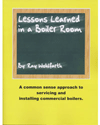How is the same news both good and bad? Because even though LEED is a popular “eco-labeling program that doubles as a marketing and policy tool, it is not as successful at being a comprehensive methodology for assessment of environmental impacts.” This is just one of the less than enthusiastic conclusions of a recent study issued by the National Institute of Standards and Technology (NIST), titled Evaluation of LEED™ Using Life Cycle Assessment Methods, which can be found at http://www.bfrl.nist.gov/oae/publications/gcrs/02836.pdf.
Well, for starters, the architectural community embraced it. And like it or not, architects represent the front line in the building delivery industry. Consulting engineers merely provide backup and support. So even though we may have extolled the virtues of efficiency, the tail was never going to wag the dog. And face it: as a societal subcategory, engineers are not the most charismatic lot. We have been preaching energy conservation for years, but few were saved.
Second, the rating system is remarkably unsophisticated and easy to sell. With the checklist, a pencil, and enough facility knowledge to be dangerous, the guys in marketing can “design” a green building on the trip to the interview. I have actually heard statements like “… a silver rating can be achieved with no cost impact on the design or construction.” How in the world do they know? Because they worked through the checklist, that’s how. “Hmm … optimize energy performance by 30 % … that sounds about right. Two points! Booyah!”
But perhaps most importantly, the LEED™ system is undemanding. The complexities of buildings require the specificity and rigor of a life-cycle approach to provide meaningful assessment. But difficulties in conducting a life-cycle analysis, as well as difficulties in interpreting and communicating the results prevent them from being utilized more generally.
Like it or not, the checklist and rating system are easy for laymen to understand. Tell the typical client that you have designed a building that uses 35 Btu/sq ft/year, and they will be hard pressed to be impressed. (FYI, 55 is the GSA standard).
Tell them you can get to silver, and they immediately ask what would it take to get to gold. Do they ask this because they understand the complexity of green design and want to save the planet? Maybe. But more likely, they just that know gold beats silver. Gold is Cassius Clay in the 1960 Olympics, Elvis when he was cool, and Tom Hanks at the Oscars. Silver is — well, I don’t know who silver is off the top of my head — and that’s the point.
The NIST study authors conclude: “While LEED™ may have accomplished more in terms of a national rating program than any other previous tool, in order to become an established standard in the building process that practitioners can rely on, it is critical that it move towards greater consistency, clarity and transparency… but much more work is needed.
“This work will require an as yet unrealized level of partnership among industry, government and third party organizations like the USGBC to develop the knowledge and tools to support assessments of this kind. LEED™ has provided an important cornerstone to this effort, defining much of the green building arena and engaging a wide array of stakeholders, but LEED™ alone does not provide an environmental assessment tool that the building industry can rely on. For that, a much greater effort must be expended by many stakeholders in the built environment.”
The good news for you: You can shell out $350, take the test, become LEED™ AP #3,338, and hype yourself as a sustainable design expert like so many others have done.
The better news for all of us: You could become LEED AP #3,338 and develop into a stakeholder instead of a placeholder by investing your time and skills helping to make LEED™ the tool it needs to be.
Why Does Leed Gain Followers?
Why, then, has it achieved such an elevated status in the design community even as evidence of its faults continue to mount?A Good Start, But …
So, we have a system that is inaccurate, misapplied, and simplistic, with a rating structure that appeals to our personal banality instead of our sense of community. Now what? Shall we carp from the sidelines? Do we ignore the elephant in the room, shun LEED, and continue to push for old school life-cycle cost analysis? Or do we recognize LEED for what it is and strive to improve it?
Sustainable & Attainable: A Label And The Able
When it comes to sustainable design, there is some good news and some bad news. The good news is that as of this writing, there are 3,387 LEED™-accredited professionals offering their design expertise. The bad news is that there are 3,387 LEED-accredited professionals offering their design expertise.



